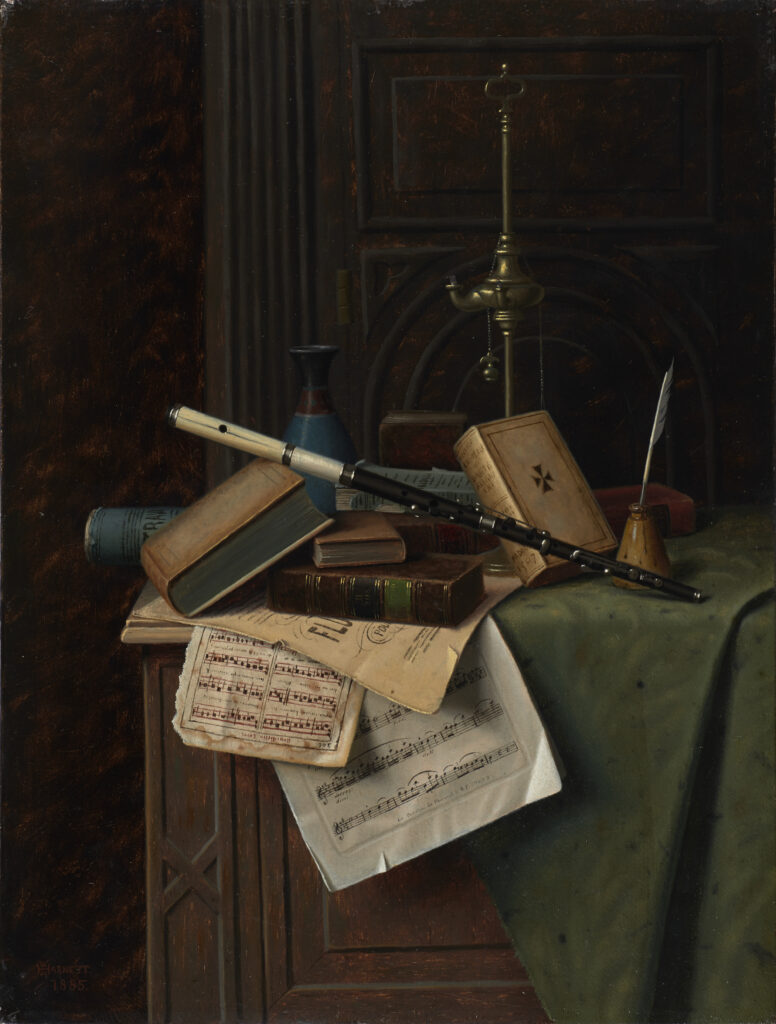Still Life (work of art)
Artwork Info
Key Ideas
- The objects featured in this still life are visual symbols of love and art. Still life paintings generally depict an arrangement of nonliving objects (such as fruit and flowers) with objects that contrast with them in texture (like bowls and glassware).
- William Michael Harnett is best known for painting finely detailed groups of objects in dark tones. He used a technique known as trompe l’oeil (trick the eye) to create the illusion of real objects.
- Music is a recurring theme in Harnett’s work. Many of his paintings feature objects related to music, such as sheet music and instruments.
Learn More
This still life painting features books, sheet music, a flute, a quill and inkpot, a small blue vase, and an oil lamp. The intentional grouping of objects represents different aspects of love and artistic expression. The books, Cervantes’s Don Quixote and Dante’s Divine Comedy, are stories about human and spiritual love. The sheet music includes an Easter hymn from a prayer book and a love aria from an opera. The ink quill and pot are tools used for writing. The flute is a musical instrument that the artist is said to have played.
William Michael Harnett was an American painter known for painting trompe l’oeil still lifes. Trompe l’oeil means “trick the eye” in French. Trompe l’oeil paintings create the illusion of real objects. Harnett’s paintings often depicted dark-toned groups of objects related to playing music, writing, reading, drinking, smoking, and hunting. He painted Still Life while he was living in Europe in the 1880s. He spent several years in Munich, Germany, where he was a member of the Munich Kunstverein (art association).
Additional Resources
Resources for Teachers
- Read an article about Harnett.
- View a similar still life painting by this artist.
- View another still life by this artist.
- Read an article about the history of the Munich Kunstverein.
Resources for Students
- View more paintings by Harnett.
- Watch a video about the trompe l’oeil technique and learn how to use it in a drawing.
- Watch a time lapse video of the creation of a trompe l’oeil window.

